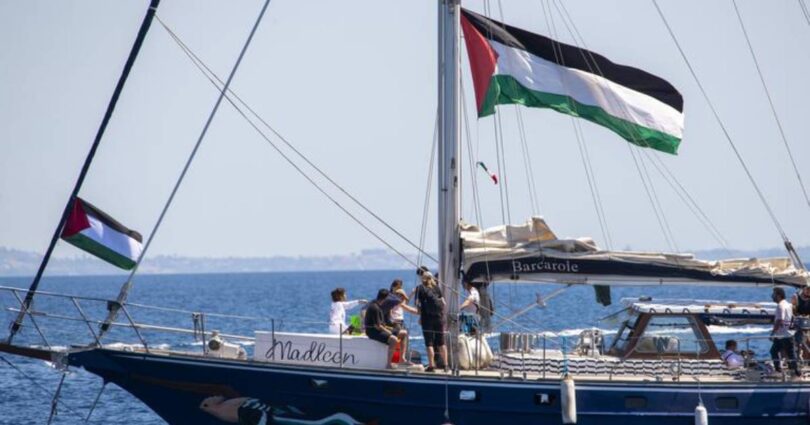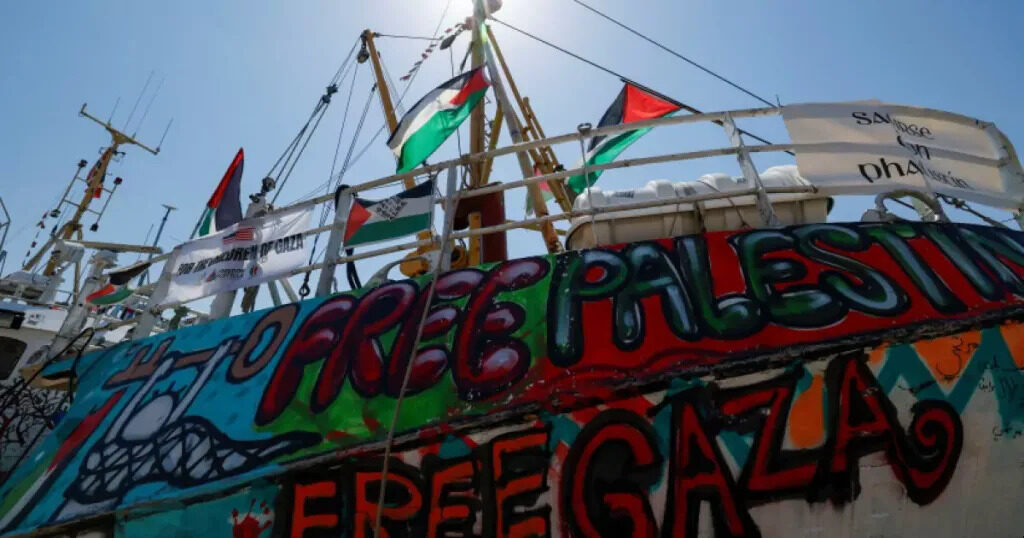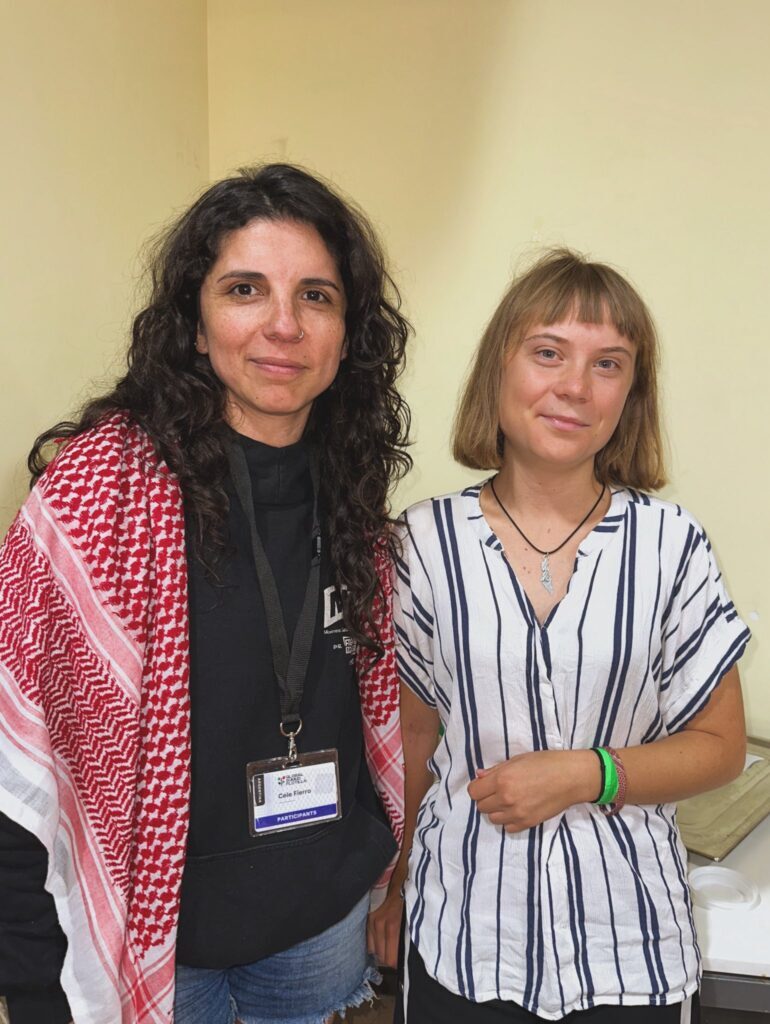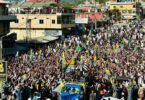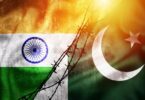By Lucas Finger
Around the world, ever larger and more frequent protests are rising up to stop the genocide in Palestine. Mass mobilizations, student encampments, and international flotillas are challenging the blockade and shaping an increasingly radicalized global movement. Here we explore the background of this naval initiative—together with Cele Fierro of MST–Frente de Izquierda—and the challenges ahead.
Despite the far right’s campaign to present support for Israel as “common sense,” solidarity movements in defense of the Palestinian people remain steadfast. Economic and political powers across the globe are complicit in the ongoing genocide, but Palestinians and their allies continue to raise their voices, demonstrating that popular solidarity is the most powerful weapon of resistance.
Calls for a ceasefire continue to gain momentum nearly two years after Israel intensified its massacre. The resilience of children, adults, and the elderly in Gaza inspires actions, protests, and speeches from artists and public figures worldwide. The Boycott, Divestment and Sanctions (BDS) campaign strengthens this solidarity by targeting multinationals—such as Starbucks, McDonald’s, and Unilever—that help sustain Israel’s military and economic power.
Today, genocide is advancing toward what Israeli commanders themselves have described as a “final solution,” piling up war crimes in plain sight. The blockade of water, food, and medicine; the destruction of hospitals, refugee camps, and churches; the killing of children, women, and the elderly in aid lines; and the forced displacement of entire communities—all amount to crimes against humanity not seen at this scale since World War II. The urgency of doubling international action to stop this extermination machine cannot be overstated.
Global Collective Actions for Gaza
The protests that began in scattered cities in 2023 soon spread across the globe. Workers pressured companies to cut ties with Israel, while students set up encampments demanding universities disclose and divest—especially in the United States, where academic institutions have deep financial links with Israel. Recently, the strategy of sending flotillas to break the blockade has been revived.
The attempt to deliver humanitarian aid to Gaza by sea is not new. With Israel’s land and air controls tightening the siege—including food blockades—the sea remains the only real channel for aid.
-
In 2010, the Freedom Flotilla was brutally attacked by Israel in international waters, killing eight and injuring dozens.
-
In 2015 and 2018, other initiatives were also intercepted before reaching Gaza.
-
In May 2025, a ship carrying well-known activists—including Greta Thunberg—was attacked with drones, and its crew was kidnapped and detained.
-
Shortly afterward, the ship Madleen was intercepted during another attempt.
The Global Sumud Flotilla
Now, a new initiative is underway: the largest coordinated attempt yet to break the siege. Thousands of activists from across the world are joining fleets headed for Gaza, determined to deliver aid and confront Israel’s humanitarian blockade. To amplify the action’s visibility, campaigners, social leaders, and influencers from diverse causes are taking part.
From Argentina, comrade Cele Fierro, ISL & MST leader and Buenos Aires City legislator for the Left Front, is among those sailing to demand the opening of a permanent humanitarian corridor and an end to genocide. This represents an important step toward building a powerful, mobilized international response in defense of a free, democratic, secular, and socialist Palestine—as we affirm in the International Socialist League.
From the river to the sea, Palestine will be free!
This article was originally published in Periodismo de Izquierda.
